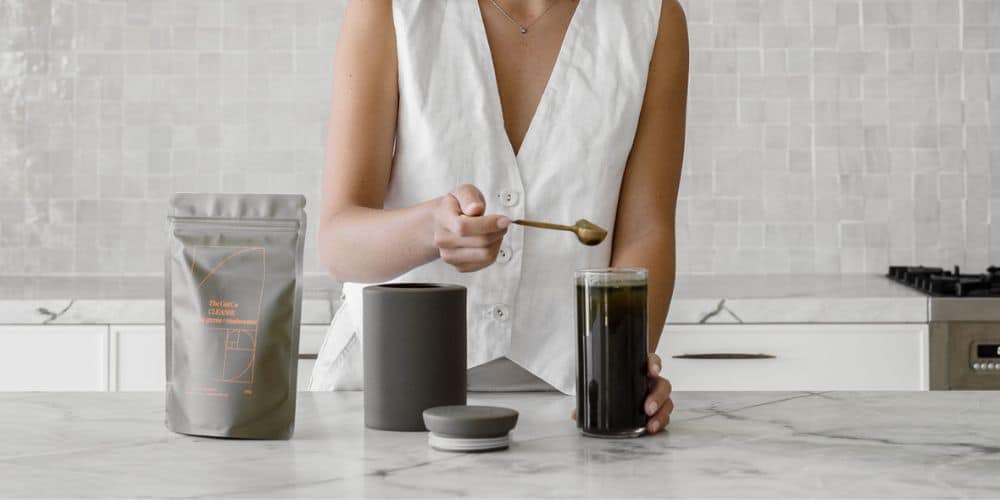

Boosting the Immune System Always Begins in The Gut- The Gut Co.
70-80% of the immune system is located in the gut, so it makes sense to look after the health of your gut in order to strengthen the immune system.
Taking immune-boosting herbs and nutrients such as vitamin C and zinc are great strategies in improving the immune system, however, they are merely secondary weapons in the fight against viruses and bacteria. The most impactful approach in boosting the immune system is improving the function and health of your gut.
The billions of bacteria that live in the gut make up what’s called the microbiome or microbiota. The microbiome is an internal ecosystem that benefits us in numerous ways, including facilitating the absorption of nutrients, regulating our appetite, producing neurotransmitters, regulating our mood and immune system.
The health of your gut determines your body’s ability to absorb nutrients from the food you eat and the supplements that you take.
A poor functioning gut will have a reduced ability to assimilate the nutrients you ingest leading to nutrient deficiencies, a major component in poor immunity.
The microbiome is beneficial to the immune system as it’s able to mobilise an attack on invading pathogens and prevent the infection from taking hold, it also has a beneficial impact on the gut lining where the immune system resides.
The best strategy for achieving and maintaining a healthy gut microbiota is to ensure that the ratio between the good and the bad bacteria is a healthy one.
Achieving this golden ratio of good to bad bacteria is obtained by feeding the good bacteria and starving the bad. The good bacteria like eating prebiotics which are found in fibrous foods such as garlic, leek, onion, artichoke, asparagus, unripe bananas and chicory root. Bad bacteria enjoy sugar and processed foods. Other factors such as stress, alcohol, gluten, medication and lack of sleep can have an adverse effect on the microbiome too.
The best way to minimise the impact that modern life has on the gut is to include a daily prebiotic to your routine and possibly also a probiotic (see below).
Prebiotics are like an insurance policy, similar to taking a multivitamin; if you don’t live the perfect healthy life (who does!) taking prebiotics regularly will ensure the bacteria are receiving enough food for them to grow and keep the bad guys at bay.
The right prebiotics
Prebiotics are a type of soluble fibre that feeds the good bacteria in the gut.
Getting enough prebiotics from food can be a challenge, especially if fibrous foods give you gas and bloating. Prebiotics can also be purchased as a supplement in various forms. Many prebiotics can cause bloating and gas in people with sensitive stomachs, hence I only recommend using prebiotics that are FODMAP safe and won’t cause bloating and gas, my top two prebiotics are Acacia gum and Partially hydrolysed guar gum (PHGG) as they have shown to increase the production of beneficial bacteria, alleviate constipation, relieve diarrhea and suppress appetite, therefore, supporting weight loss.
What about probiotics?
Probiotics can also be helpful, although we are not entirely sure how many actually survive the acid in the stomach and how long they are able to stay in the digestive tract. We know that probiotics have a positive impact on gut function and the immune system. There is one probiotic that stands out against all the others and this is Saccharomyces boulardii (SB).
SB is resistant to stomach acid and antibiotics so it will survive in your gut and can be taken while on antibiotics. SB has multiple actions in treating and preventing several gastrointestinal diseases but in addition to this SB can bind to pathogenic bacteria and neutralise their toxins and is capable of activating certain parts of the immune system. SB is truly a strong contender in strengthening the immune system in general and in the fight against infections specifically.
FEED contains pre and probiotics +vegan vitamin D3+K2 for immune, gut and bone health
REPAIR contains superfoods (high in vitamin C, Zinc and vitamin A) plus skin vitamins and collagen
FEED and REPAIR work together on the skin, immune and gut axis
References
https://experts.umn.edu/en/publications/partially-hydrolyzed-guar-gum-clinical-nutrition-uses
https://www.ncbi.nlm.nih.gov/pubmed/28643294
https://www.ncbi.nlm.nih.gov/pmc/articles/PMC3296087/
https://www.ncbi.nlm.nih.gov/pmc/articles/PMC5384743/